I planted a one gallon container wolfberry bush in a water harvesting basin on a dry corner of the yard in 2015. That first summer I watered it sporadically, then after that I left it alone to compete with the grass and weeds. Five years later, it’s a seven foot tall by seven foot wide bird sanctuary. Wolfberry certainly once grew wild on this land, in the floodplain of the Santa Cruz River, about a third of a mile from the current channel.
Actually I planted several species of wolfberry, and a Baja species has only lavender flowers now, but has a very long fruiting season.
This Tucson native Fremont wolfberry, however, has a short bountiful spring fruiting in years with good winter rains. If you look closely, you’ll see a few white flowers among the red berries.
The North American wolfberries are close relatives of the gojiberry from China and distant relatives of tomatoes. Wolfberries are slightly sweet but taste and look somewhat like little tomatoes, so are also called tomatillos.
Harvesting in the thorny branches is meditative to me, unlike for the flitting verdins working the other side of the bush.
In the absence of fresh tomatoes, I decided to make a salsa. Also in the yard are I’itoi’s bunching onion.
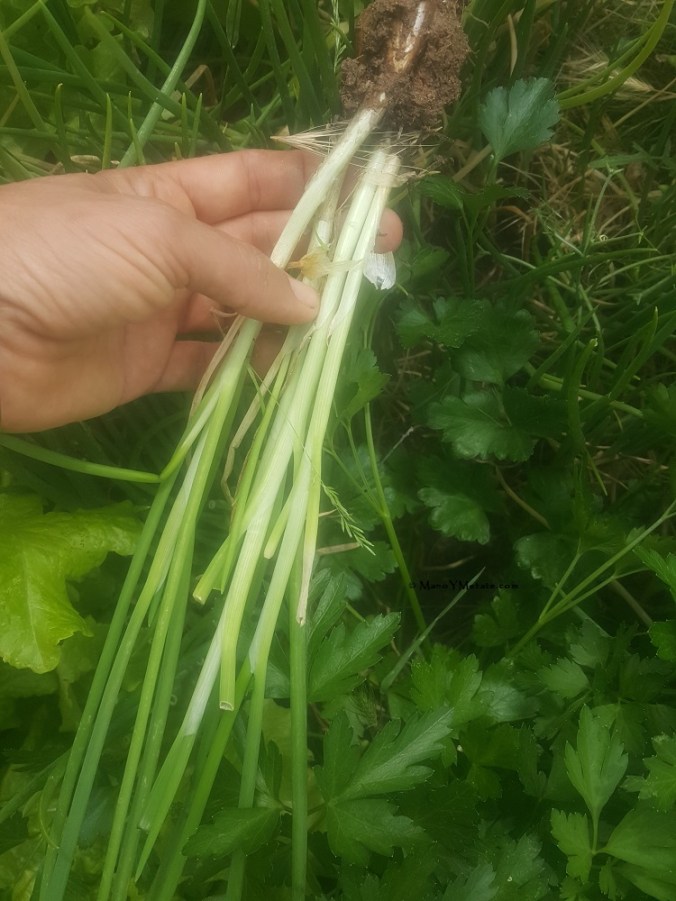 Our Tucson wild oregano, oreganillo, is also known as Aloysia wrightii or Wright’s beebrush. It tastes somewhat like Mediterranean Mint family oregano, somewhat like other Verbena family Mexican oregano species. It definitely has a lemony scent that I sometimes catch in the breeze before I spot the scraggly plants hiding in plain sight in the wild. The leaves never get much larger than this.
Our Tucson wild oregano, oreganillo, is also known as Aloysia wrightii or Wright’s beebrush. It tastes somewhat like Mediterranean Mint family oregano, somewhat like other Verbena family Mexican oregano species. It definitely has a lemony scent that I sometimes catch in the breeze before I spot the scraggly plants hiding in plain sight in the wild. The leaves never get much larger than this.
Putting all this together, I broke out last year’s stash of backyard grown chiltepin and the salt I collected a few years ago near the Sea of Cortez.
In the molcajete, I started with the chiltepin and salt.
The diced I’itoi’s onions
And the fresh wolfberries and oreganillo
When making Mano Y Metate mole powders, I sift the largest particles from the lime treated masa meal. I’ve been making this leftover coarse meal into a mush and frying it. From frozen to crispy in the time it took to make the salsa.
I ate in the yard, contemplating the bounty of the desert.
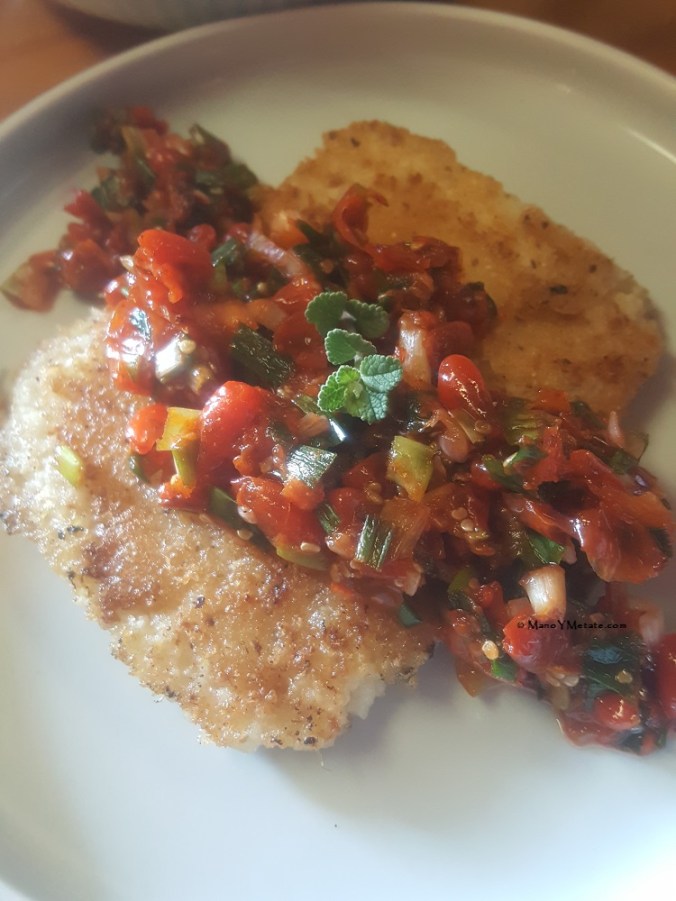
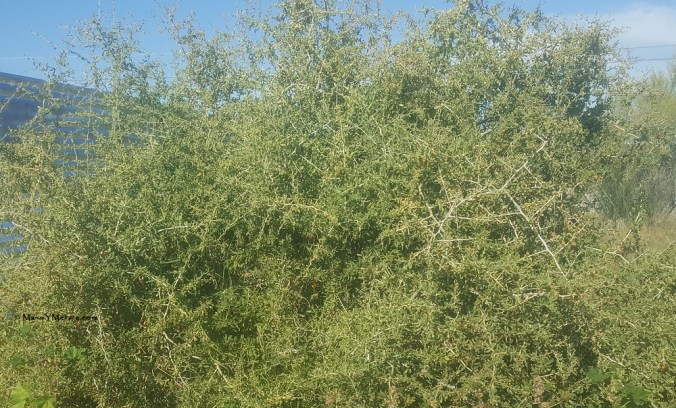

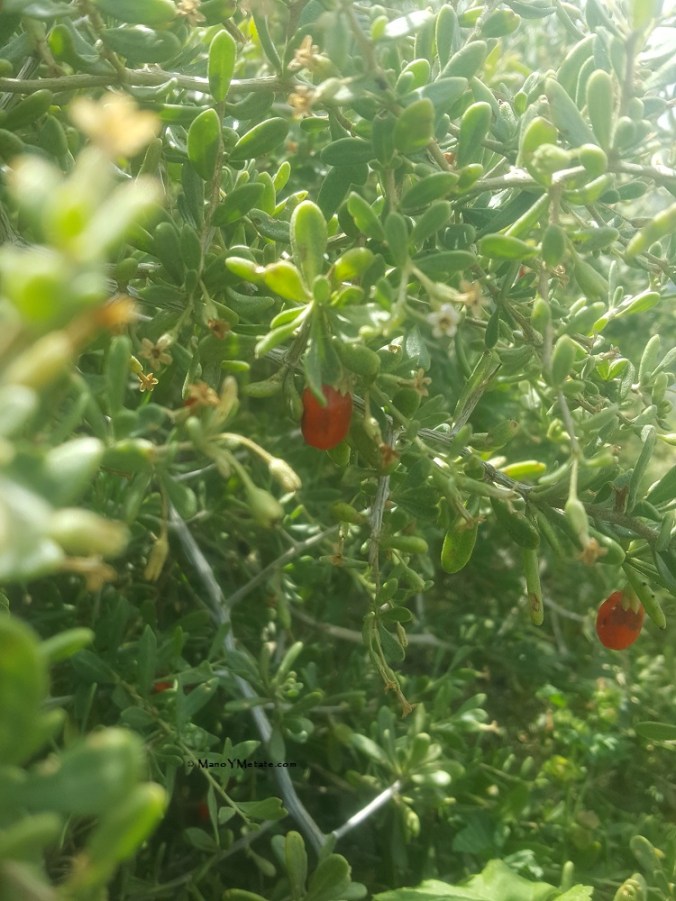
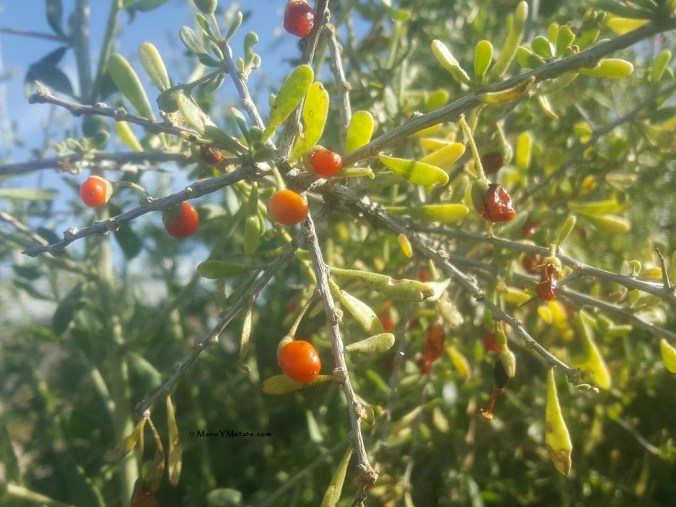

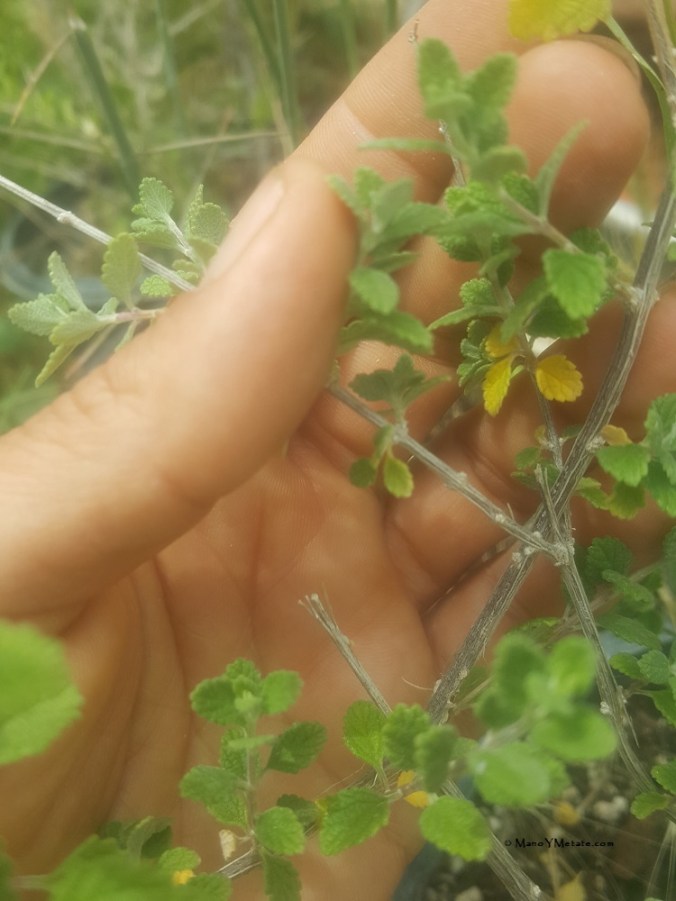

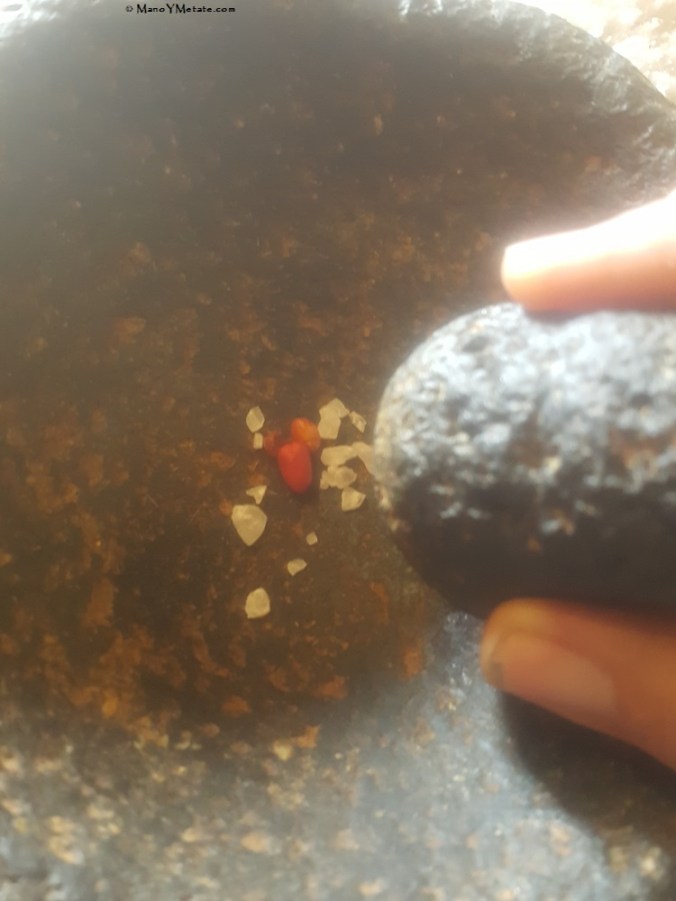
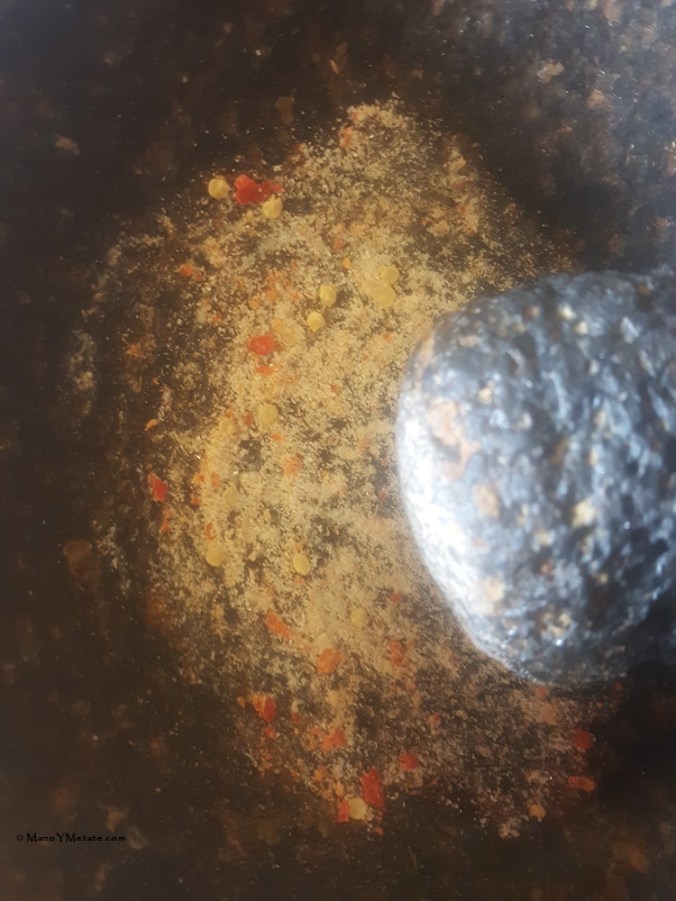

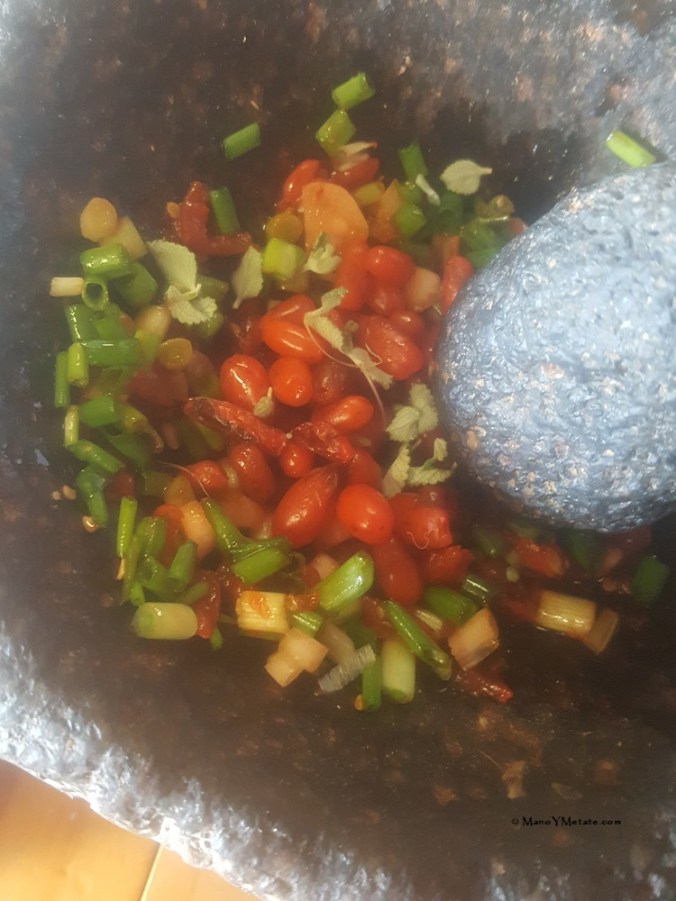
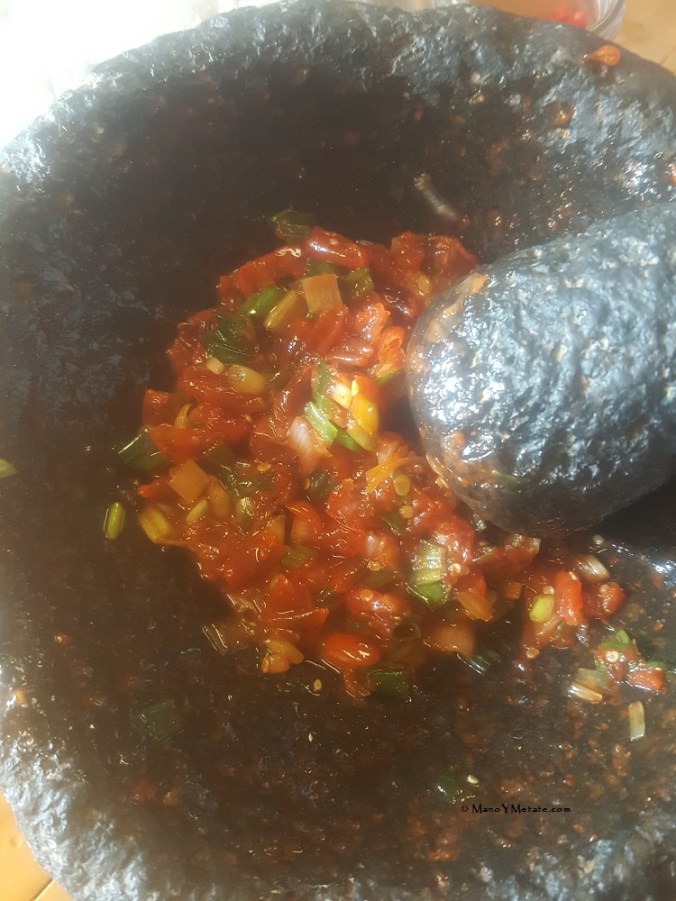

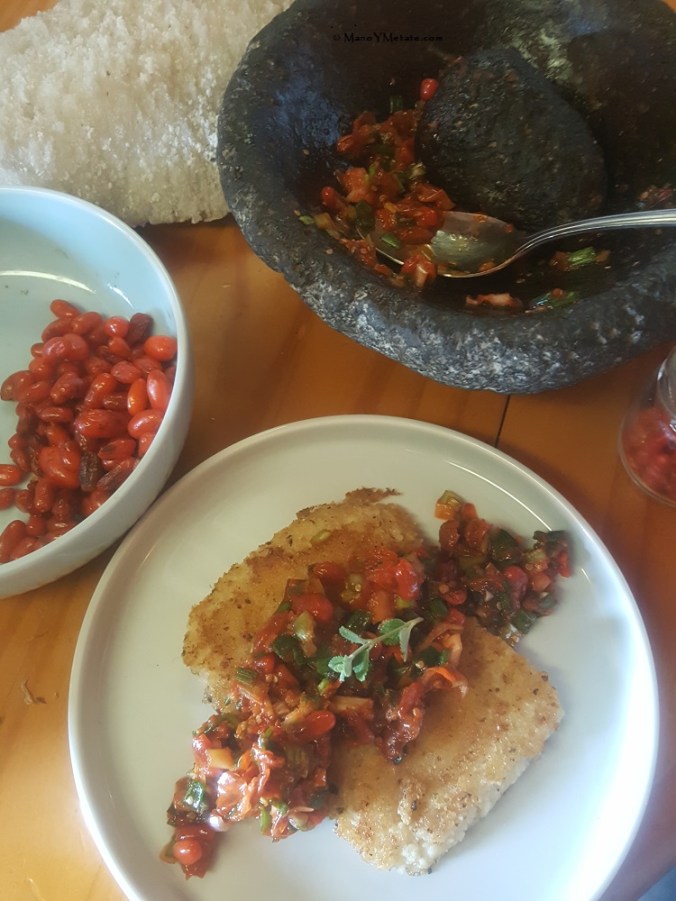
Pingback: Savory Wolfberry Amaranth Balls | Savor the Southwest:
YUM!! LOVE!!
Barbara Rose Bean Tree Farm Tucson AZ beantreefarm.com
“Because we can not understand nature’s intelligence does not mean she isn’t speaking to us.”
On Sat, Apr 18, 2020 at 3:48 PM Savor the Southwest: wrote:
> Savor Blog Partners posted: ” I planted a one gallon container wolfberry > bush in a water harvesting basin on a dry corner of the yard in 2015. That > first summer I watered it sporadically, then after that I left it alone to > compete with the grass and weeds. Five years later, it’s a” >
LikeLike
Thank you, Barbara Rose for all your inspiration over the years, on wolfberries, listening to nature’s intelligence, and life. Love, Amy
LikeLike
Super, esp the photography . You really captured the event. We gathered wolfberries when we were first dating 45 years ago, and I still have a fondness for them. This marks the season nicely. Inspiring work.
LikeLike
Thank you, Ford! I’d love to hear about what you’re harvesting and making, too. Take care, Amy
LikeLike
This is so excellent! Like some of the other native fruits and vegetables that you write about, this is one that I did not think anyone else had any interest in. It is discouraging to try to research fruits and vegetables that are native to North America, and finding no mention of some of them (like the banana yucca). I find almost nothing about wolfberry (and what I found might have been what you wrote about them). It is interesting that there are several species. It seemed to me that there were only three that I tried to find information about, but that could have been because I was only interested in those three for this region. If I remember correctly, the most common happens to be the most suitable for this region. It is funny that in a chaparral climate, where I typical search for species that do not need much water, I instead searched for a species that was the most tolerant of a bit of rain through winter and spring. I was never a fan of the gojiberry fad, but would like to grow wofberry within the next few years.
LikeLike
Thank you, Tony! Yes, written information is a good start, when we can find it. After that, it’s often a passing comment from a fellow harvester that piques my interest sets me adventuring in the wild and growing what I can in my yard. Wishing you good luck in your searches, Amy
LikeLiked by 1 person